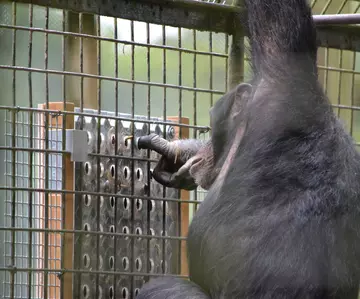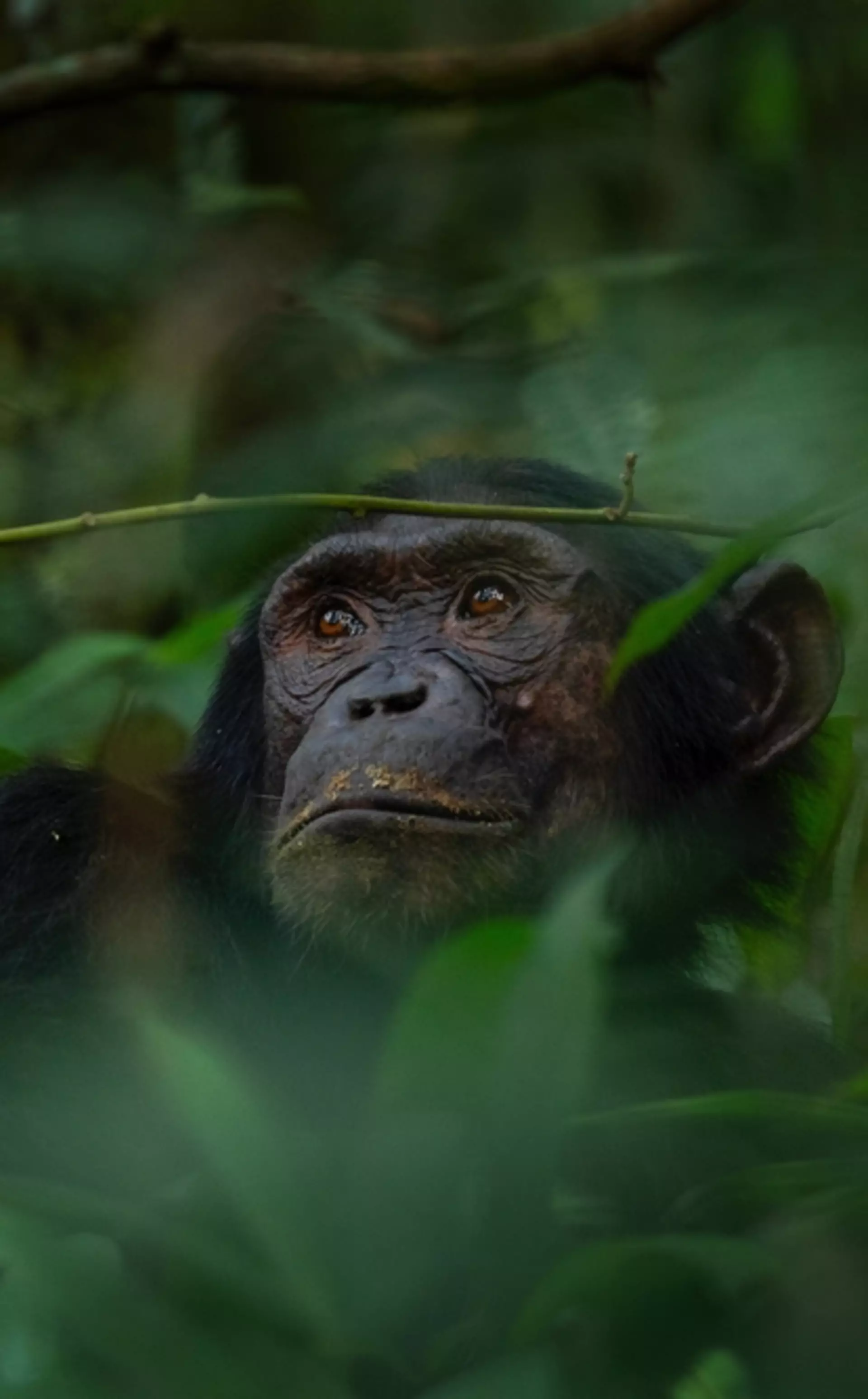
In Animal Behaviour – chimpanzee case study, students will explore the reasons why we consider certain animals “intelligent” or “not intelligent”, and the theories surrounding how animals learn. They will discover how ZSL uses the science of learning behaviours to benefit animal welfare at the zoo and will carry out a behaviour study of a member of our chimp troop to understand how this information is useful both to our keepers and those working on the conservation of animals out in the field.
Please note, this workshop takes place outside. Please ensure students wear appropriate clothing and footwear.
| Age: Post 16 | Duration: 50mins | Capacity: 35 students | Outdoor workshop |

Intended learning outcomes:
Students will be able to:
- Collect behavioural data
- Give examples of different species' learning ability
- Demonstrate the different behaviours that can be assessed using an ethogram
- Discuss how ZSL uses operant conditioning to benefit the welfare of the chimpanzees at the Zoo
- Demonstrate how we use the data collected into applying changes in the Zoo
Additional resources
- Support your students' learning before, during or after a visit with our online teaching resources.
Topic 4: Learning Theory
- 4.1.1 The main features of classical conditioning, including: unconditioned stimulus (UCS); unconditioned response (UCR); conditioned stimulus (CS); neutral stimulus (NS); conditioned response (CR)
- 4.1.3 The main features of operant conditioning, including: types of reinforcement and punishment (positive and negative).
3.2.1 Approaches in psychology
- Learning approaches: the behaviourist approach, including classical conditioning and Pavlov’s research, operant conditioning, types of reinforcement and Skinner’s research
3.7 Genetics, populations, evolution and ecosystems
3.7.4 Populations in ecosystems
Students should be able to:
- Show understanding of the need to manage the conflict between human needs and conservation in order to maintain the sustainability of natural resources
- Evaluate evidence and data concerning issues relating to the conservation of species and habitats and consider conflicting evidence
Topic 4: Biodiversity and Natural Resources
4.1 Know that over time the variety of life has become extensive but is now being threatened by human activity.
Topic 10: Ecosystems
10.4 Human effects on ecosystems
i) Understand data relating to human influences on ecosystems, including climate change and depletion of biological resources, including overfishing.
Module 4: Biodiversity, evolution and disease
4.2 Biodiversity
4.2.1 Biodiversity
(f) the factors affecting biodiversity
Module 4: Energy, reproduction and populations
4.3 Photosynthesis, food production and populations
4.3.2 The impact of population increase
(b) the impact of the rise in human population on ecosystems and biodiversity
18 Biodiversity, classification and conservation
18.3 Conservation Maintaining biodiversity is important for many reasons. Actions to maintain biodiversity must be taken at local, national and global levels. It is important to conserve ecosystems as well as individual species.
